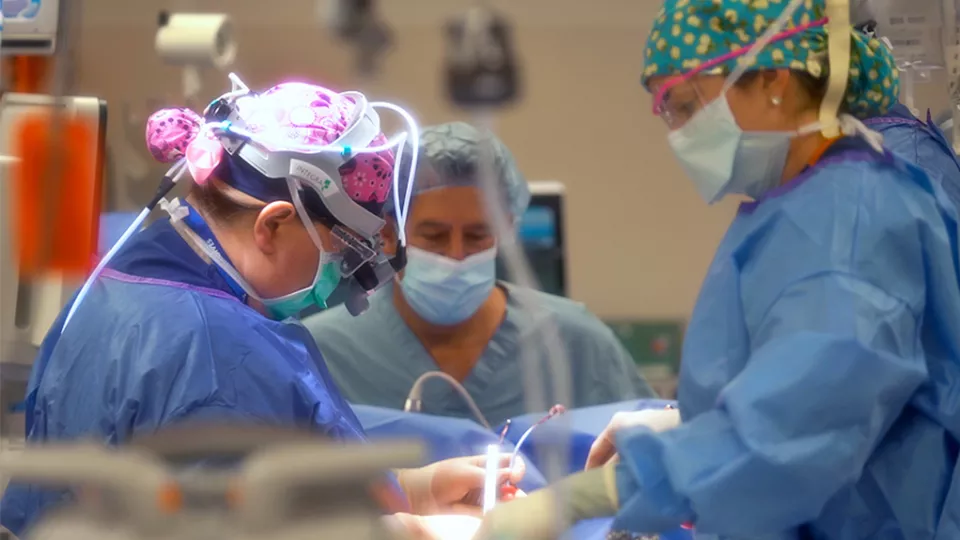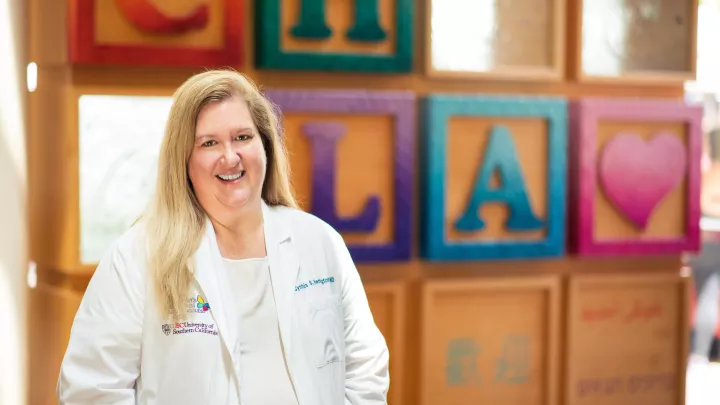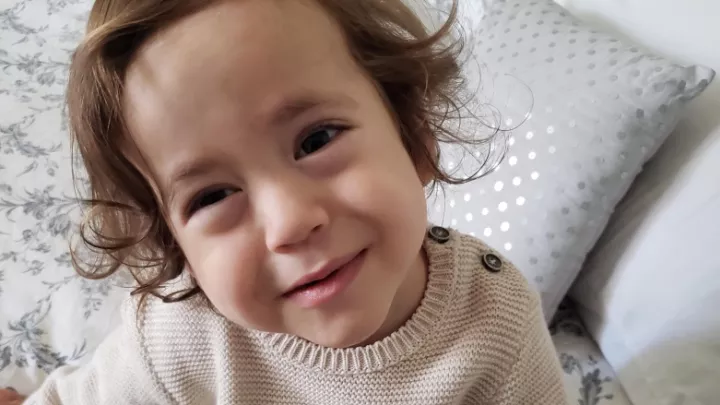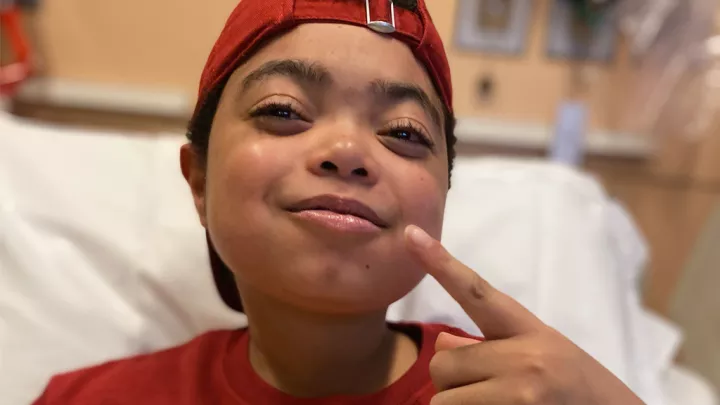
Cynthia Herrington, MD, performing a heart transplant
How Should Surgeons Approach Heart Transplants in Adults With Fontan Circulations?
This spring, Cynthia Herrington, MD, gave a master class presentation on how to perform a heart transplant in a complex—and growing—patient population: adults with failing Fontan circulation.
The talk, which took place in May at the American Association for Thoracic Surgery 103rd Annual Meeting in Los Angeles, attracted a large audience of adult heart transplant surgeons—who are increasingly seeing patients with single ventricles in their programs.
“Today, 80% of patients with a Fontan are living to adulthood before their circulation fails,” says Dr. Herrington, Surgical Director of the Heart Transplant Program and the Ryan Winston Family Chair in Transplant Cardiology at Children’s Hospital Los Angeles. “That’s good news, but it also presents challenges for adult transplant surgeons. These patients are nothing like the heart transplant population they are used to seeing.”
Below, she shares some key takeaways from her talk on how to best approach these complex patients.
Transplant candidacy
Prior to transplant, Dr. Herrington notes that it is critical to evaluate the patient’s collateral blood vessels and collateral blood flow—a particular issue for individuals who have had the Fontan procedure.
“We had a large discussion at the meeting about collateral flow and how to estimate it,” she says. “These vessels can be huge in these patients, and they cause significant postoperative bleeding.”
In addition, it’s important to know in advance exactly where any stent material is located and to be familiar with the type of Fontan surgery that was performed.
“You want to really know the anatomy and where the connections are,” she says. “In addition, sometimes a heart transplant will be the sixth or seventh time the patient has had a sternotomy. There will be a lot of scar tissue—making the procedure more difficult and making the risk for bleeding higher.”
Choosing a donor
Dr. Herrington recommends selecting a larger donor heart for a patient with a Fontan. In her practice, she’ll choose a heart from a donor up to 6 inches taller than the patient.
“I upsize these hearts as best I can; I want a bigger engine going into these patients,” she says. “A bigger heart can handle a little bit more of the flow coming back from the collaterals. Their blood pressure will be a little higher, but that’s OK. In my experience, they do better with a bigger graft.”
It’s also important to make sure the donor’s right heart is healthy and strong. And she requests that the procurement surgeon provide the superior vena cava (SVC), the entire innominate vein, the aortic arch and as much of the inferior vena cava (IVC) and pulmonary arteries as possible.
“That gives me more material to work with,” she explains. “These patients also frequently have a left SVC. If they do, the donor innominate vein gives you a way to hook that into the heart.”
Controlling bleeding
In her talk, Dr. Herrington detailed how to do each segment of the transplant in a safe way. Because of patients’ collateral blood vessels, one of the major concerns surgeons face during the operation is bleeding.
She advises “getting comfortable with going cold”—putting the patient into deep hypothermia to protect the brain and control bleeding during the transplant.
“After the heart is in and you warm the body temperature back up, though, that’s when you are going to see the bleeding,” she says. “So, you need to have a strategy for very quickly controlling that. Be prepared to use every single hemostatic agent you have.”
Getting help
Dr. Herrington adds that not all Fontan transplants are equal—some patients have much more complicated anatomy. She urges surgeons to refer the most complex cases to congenital surgeons until they have more experience with simpler cases.
Her final recommendation: Ask for help.
“These are very unique transplant patients. Don’t hesitate to reach out to your pediatric or adult congenital colleagues and ask them to assist you in these surgeries,” she says. “We are happy to help. That will improve your ability to perform these transplants and help ensure the most successful outcomes for your patients.”


